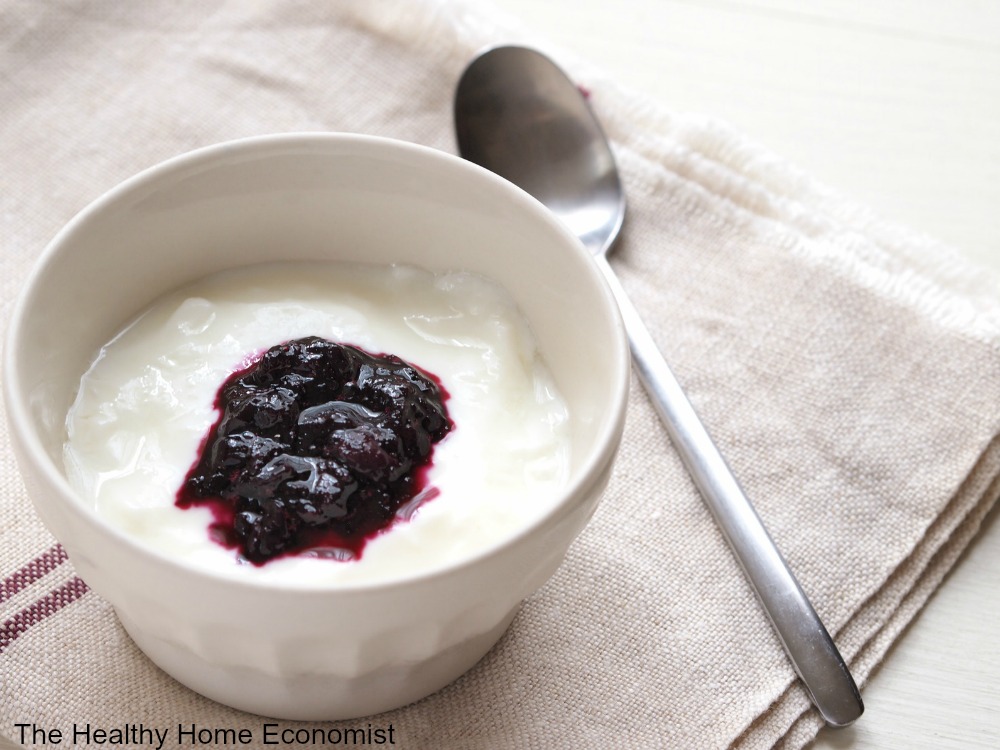 If you’ve watched even one of the videos from the 100+ Real Food video library available on this blog, you probably know that I have a microwave in my kitchen.
If you’ve watched even one of the videos from the 100+ Real Food video library available on this blog, you probably know that I have a microwave in my kitchen.
Do I use it for cooking or heating anything that my family consumes?
No. I haven’t used a microwave to heat or cook anything in many, many years. I much prefer my small countertop convection oven which doesn’t heat food unnaturally and creates carcinogens like a microwave does.
Why don’t I just remove the microwave from my kitchen then? The truth is that the microwave can function as a handy airtight cupboard and proves quite useful for other tasks besides cooking and heating believe it or not.
I mentioned in one of my Real Food videos that I frequently use it for airtight, room temperature storage of freshly baked bread, cookies, and other baked goods.
It also works very well for making homemade raw yogurt. It is, of course, made from unpasteurized milk.
What about Greek yogurt? Is Greek yogurt better? How about the similar German style cheesy yogurt known as Quark? While not necessarily healthier, if you make it yourself allowing sufficient time for probiotic inoculation, these are certainly a nutritious choice! It is ultimately a personal preference as long as the yogurt is fermented properly.
If you don’t have access to raw yogurt, whether regular or Greek, then you don’t know what you’re missing. Pasteurized yogurt even if organic pales in comparison to the digestibility and nutrient value of raw yogurt, so if you are able to snag some raw milk from a local farm, here’s how to make it into raw yogurt.
While the recipe below works fine using the microwave as the incubator, yogurt made in a slow cooker is more dependable in texture.
*This helpful recipe idea was given to me by my friend Cynthia Calisch, who has passed away. May she rest in peace.

Raw Yogurt Recipe
How to make raw yogurt using the microwave as the perfect incubation unit (turned off). When raw, yogurt has a pleasant drinkable style texture compared with scoopable heated yogurt.
Ingredients
- 1/4 cup Plain, whole milk yogurt preferably organic and grass-fed
- 3 3/4 cups Raw cow or goat milk preferably grass-fed
Instructions
-
Scoop 1/4 cup of the plain whole milk yogurt into a clean, wide mouth, glass mason jar (I like these). After you've made raw yogurt one time, you can use your own raw yogurt as the starter for subsequent batches.
-
Warm the raw milk on the stove to between 105 - 117F. No enzymes or nutrition is lost heating to this temperature but the warmed milk enables the yogurt culture to "take" better than room temperature raw milk.
-
Pour about half a cup of the warmed milk into the mason jar and mix with the yogurt.
-
Pour the remaining warmed milk into the mason jar, stir and close the lid tightly.
-
Wrap the mason jar in a thick hand towel, secure with a rubber band and place inside your microwave closing the door. Leave the light in the microwave on to keep a bit of warmth inside.
-
In 24 hours, open the microwave and voila! You will have yourself a lovely quart of raw yogurt!
More Information








got rid of ours about two years ago. I still havent figured out the crockpot yogurt thing yet
Great Idea!!!
oh, I tossed mine! well, actually I e-cycled it…my crockpot is FAR more useful in it’s place 😉
this is an awesome idea!
but i also have a question…this is my second time making raw milk yogurt. the first time it was “chunckier” so to speak and more runny. this time it is thicker and has the consistency of store bought yogurt. which one is correct?? this time i just introduced the starter to the raw milk, two tsp in each mason jar, but didn’t stir it in. (read this on someone’s blog) they both taste similar, but i just want to make sure the second way is just as beneficial. do you know anything about this?
thanks!!
YOu can get quite a variation in texture though in general raw milk yogurt is more drinkable style than pasteurized yogurt.
Love this idea! I also like to use it as a moist place to let breads rise in the winter. I put a bowl of water in there and heat it up for a five minutes. Then I remove it and put the bread inside and leave to rise. It stays warm and moist for a long time.
Dang. There goes my microwave.
Thank you so much for posting!!!!
mine’s a spice cabinet and the turning glass dish acts as a nice lazy suzan 🙂
That is such a cool idea, Lisa! I must mention it to my husband… our spices take up SO much shelf space in our pantry!
Thanks for that! 🙂
If you are going to use the microwave to store spices, be sure not to ever use the so-called “surface light”. My mw is an above-the-stove model, and the surface lights are located sort of underneath the body of the mw and shine down onto my stovetop while I’m cooking, and can also be used as a kitchen night light. My mw is a GE and if anyone else is using one like it, those bulbs throw off a lot of heat. Mine doesn’t have an interior light which I can turn on independently. If the mw oven door is open the light’s on, if it’s closed the light’s off. But I could make yogurt with the heat that goes up into the mw from those bulbs, for sure.
Also, my mw “turntable” doesn’t turn independently either. It will only turn if the oven is functioning. It’s not like a lazy susan. But even if I wanted to use my mw as a spice cabinet I can’t because of the heat from the surface lights, which I use quite often up here in the hinterlands where it’s dark by 4:00 in the afternoon and stays dark until 7:30 a.m. Even with only one bulb going while the second bulb was burned out recently, the inside of the oven gets downright warm. Too warm to store delicate spices and herbs, which will deteriorate quickly when exposed to warm temps for any length of time.
Too bad we got rid of ours almost 4 years ago! Never even missed it, until now 🙂